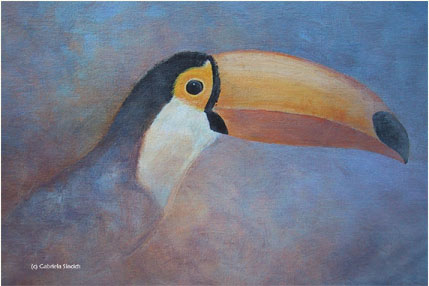|
The visual system is a portion of the
nervous system that allows an organism to obtain visual
information from its environment and decode it in such a
way that the organism can interpret it. There are
different components of the complex visual systems of
birds (eyes, optic nerves, visual cortex, etc.). The
placement of the eyes in the skull, the morphology of
the retina, and the visual pigments on it, among other
things, influence the way in which birds can perceive
their environment and behave towards it. In this
website, we will focus on three components of avian
vision: visual fields, visual acuity, and visual
tracking. We will add more modules in the future (color
vision) as we make progress with our own research.

Previous:
Introduction Next:
What we do in our lab
|